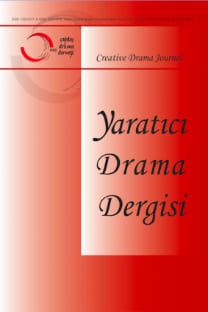Working in Role: Teachers and Children
Drama as a learning medium, has its roots in dramatic play. Very young babies naturally imitate and mimic what they see and hear. Once they are able to move around, toddlers start trying out things that they have seen adults doing. For example, they might pretend to cook, make imaginary cups of tea, drive imaginary cars and motorbikes, pretend they are talking to someone on a mobile phone, etc. They sometimes use functional toys in their dramatic play, e.g. a toy teapot ‘as if’ it were a real teapot, but they also use ambiguous objects imaginatively, ‘as if’ they are something else. For example, a cardboard box might become a car, a stick might become a knife. They often bring in dolls, furry toys, their pets or imaginary friends into their role- play scenarios, as the other characters. Children will also role-play together and sometimes with adults. The role play is not real but the skills being developed are real, e.g. co-operation, collaboration, turn taking, negotiation, listening, fine motor skills, etc. Whilst imitating, mimicking and improvising, they are using real language purposefully, within a range of familiar or newly imagined contexts. They feel confident and successful in their make believe worlds and are often rehearsing adult situations and activities. Young children in schools get time in role play areas (both indoors and outdoors). They sometimes have teachers and/or other adults interacting with them as they role play but they also should have opportunity for their own, free role play without adults involved. A teacher (or other adult), role-playing with children can help focus and maintain children’s attention, model various types of talk, give status to their make believe and introduce problems to be resolved together. Teachers in role can stimulate and challenge the children’s various types of thinking and inter-thinking, from within an engaging and compelling fiction.
Anahtar Kelimeler:
Working in role, Teacher in role, Teacher, Children
___
- Baldwin, P. (2019). Working in Role: Teachers and Children. Creative drama.
- ISSN: 1305-8177
- Başlangıç: 2006
- Yayıncı: Gençlik Kulübu ve Çağdaş Drama Derneği
Sayıdaki Diğer Makaleler
Rol İçinde Çalışma: Öğretmenler ve Çocuklar
Promoting the Acceptance of the ‘other’ through Drama in Education
Theodora PAPAİOANNOU, Alkistis KONDOYİANNİ
Güzel Sanatlar Eğitim Alanı Olarak Yaratıcı Dramanın MEB ve YÖK Programlarındaki Görünümü
Ömer ADIGÜZEL, Gizem SİVRİKAYA
Antigone LASKARIDES, Alkistis KONTOYIANNI, Asterios TSIARAS, Christina ZONIOU
Eğitimde Drama ile ‘Ötekinin’ Kabulünü Teşvik Etmek
Alkistis KONTOYIANNI, Theodora PAPAIOANNAOU
Masal Anlatımının İlkokul 4. Sınıf Öğrencilerinin Konuşma Prozodilerine Etkisi
Fatih Çetin ÇETİNKAYA, Muhammet SÖNMEZ
Merve ULU, Ferah BURGUL ADIGÜZEL
